In the autumn of 2022, Ryan Sylva and I hiked the length of the Grand Canyon.
This is post 2 of 2, which details trip highlights and lessons. Part 1 is an overview of the trip in terms of length, duration, location, terrain, natural history, climate, water, and resupply.
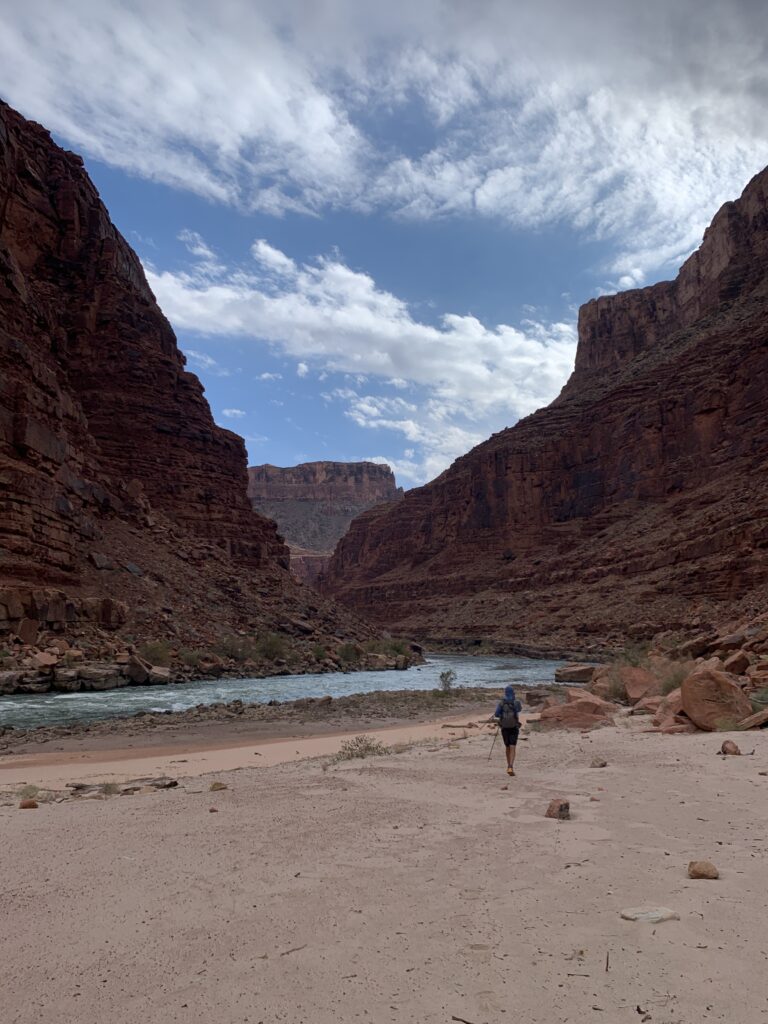
Highlights
It’s hard to whittle this experience down to a handful of highlights because the entire experience was a highlight. However, I enjoyed reflecting upon and distilling the aspects of this adventure that I treasured the most.
Developing a relationship with the Canyon. Deepening my knowledge of the Grand Canyon and gaining a more intimate understanding of the history, the geology and characteristics of different rock types, the rules of travel, and the nonhuman inhabitants felt like being let in on an incredible secret. Each day was filled with seeing diverse types of rocks and getting the chance to crawl over and around them and learn their properties. Each time we caught sight of a bird or animal felt special and I was constantly seeing new plants, observing where they liked to grow, in what conditions, and around whom.
It was similar to the excitement of falling in love and wanting to learn everything you can about your new partner. Day after day, it felt like I sunk more deeply into the timelessness of the place, becoming more connected to its rhythms and inhabitants. We drank from the same pools as the coyotes and followed the sheep tracks, trusting their ancient knowledge of the land. The plants and animals of the Canyon became our teachers; demonstrating how to move through and inhabit the harsh environment.
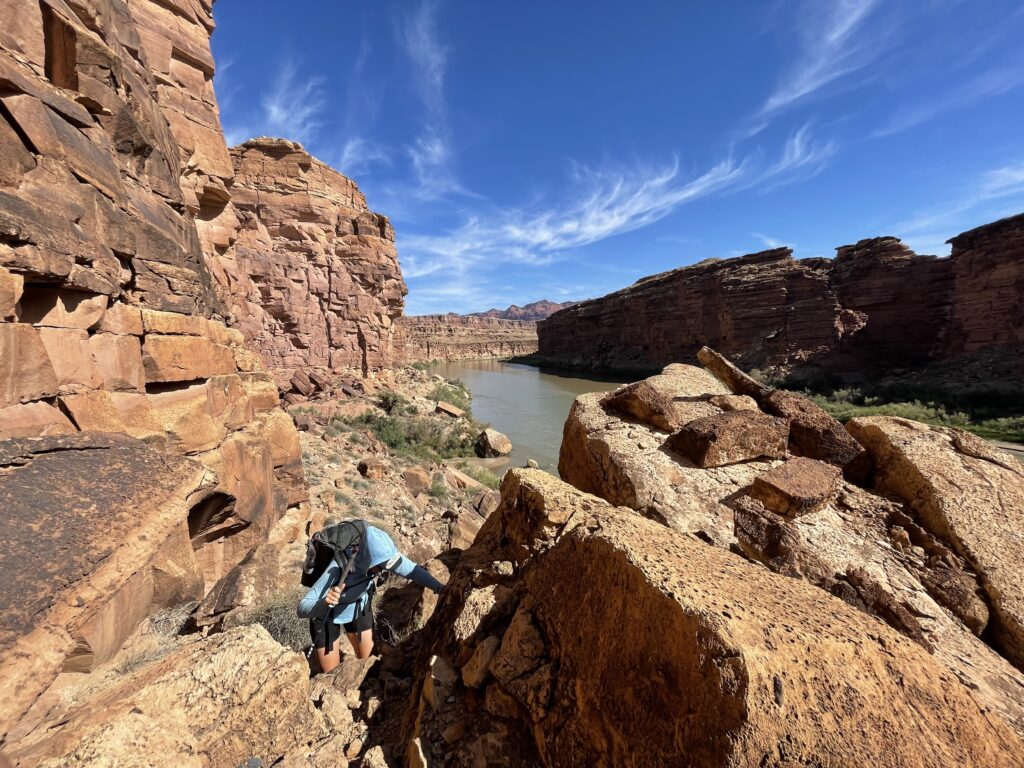
The navigation, route-finding, and problem-solving. This was the most mentally engaging hike I’ve ever done. Nearly every moment of every day required my full presence as I was not only paying attention to macro navigation but to the route finding required with each step, which included avoiding any number of obstacles at once. For instance, it was not uncommon to be gingerly stepping along the edge of a very steep, loose, slope of hermit shale with a 500’ sheer drop off less than 12 inches to your left while also stepping over a beavertail cactus, swerving around a teddy bear cholla, and ducking under a catclaw branch. And doing that for 10 hours of the day.
From one end of the Canyon to the other, we passed through different ecosystems which felt like different worlds in a video game, each with it’s own unique challenge. Here’s the section of endless prickly pear, then the section of steep talus cliff walking, then the teddy bear cholla minefield, then the dead-tamarisk-hopping through the silt flat, and on and on. I was constantly learning about how to travel more efficiently off-trail through the different types of terrain and just as I’d gain proficiency, a new challenge would be presented. This made the experience ever-engaging.
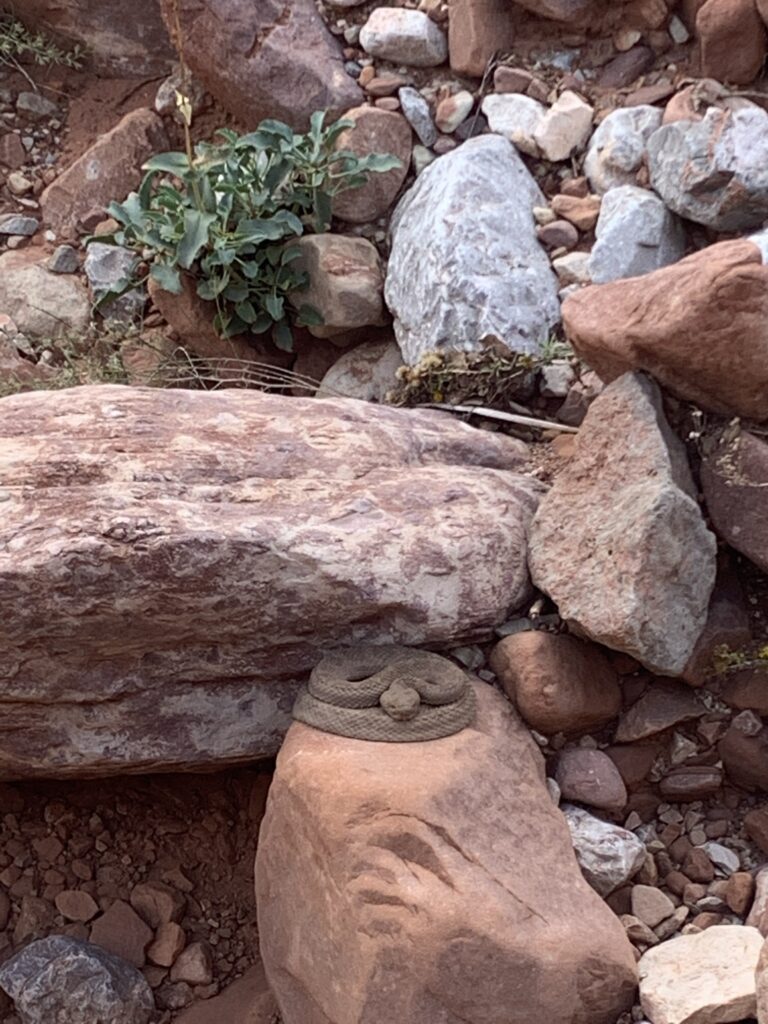
The remoteness. Similar to my hike in the Great Basin in 2021, I was attracted to the harshness and remoteness of this route. Once beneath the rim and off the main corridor trails, we didn’t see another backpacker the entire time. The western Grand Canyon felt particularly remote as we didn’t even see any rafters west of Diamond Creek. It’s rare that one can travel for so long in the backcountry without encountering other people and very little human infrastructure. It felt like a true wilderness experience.
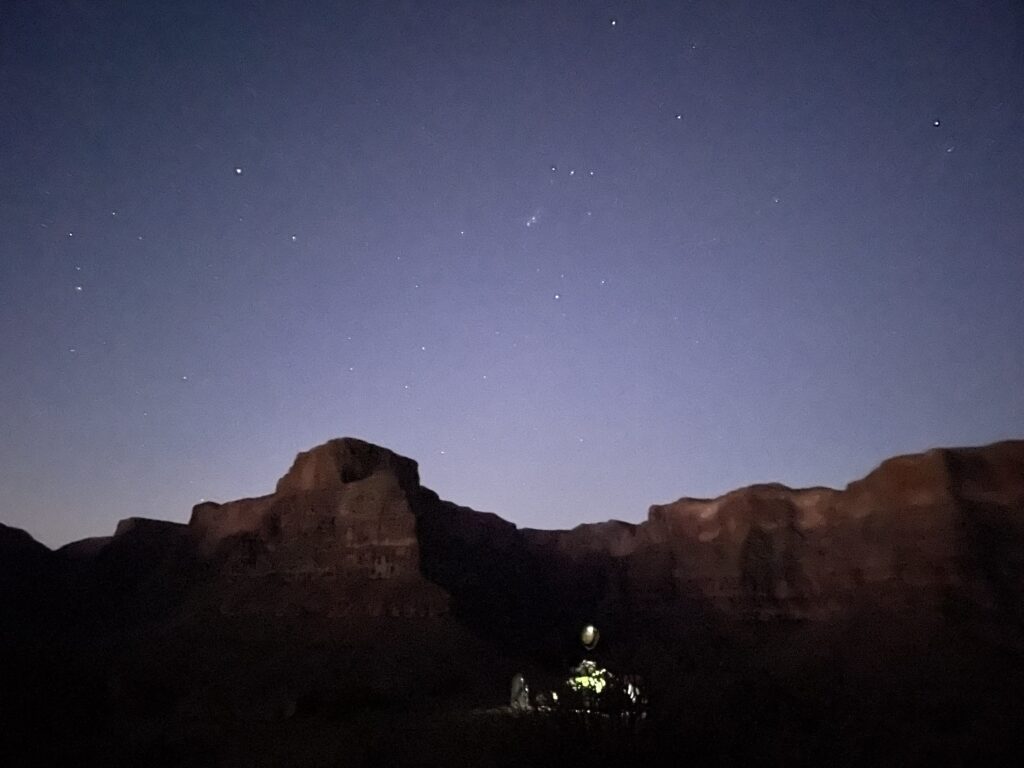
The 12-hour nights and dark sky. The Grand Canyon has some of the darkest skies to be seen anywhere in the continental US and each night countless stars blanketed the sky in our narrow ribbon of view between the Canyon’s walls. Hiking in autumn meant we had no less than 11 hours of darkness each night, and closer to 13 hours by the time we finished. Each day I looked forward to arriving in camp, not just to rest my weary muscles, but to lay there for hours and watch the constellations shift.
The extra rest was a treat as well. I’m accustomed to hiking from dawn to dusk during long summer days, only being in camp long enough to lay out my bedroll, sleep, and pack up again. These long nights allowed time for my body to recover from the demands of the day. There was also ample time to savor a slow-cooked dinner, breakfast, and hot coffee in the crepuscular hours while winding down after a long day or mentally preparing for another.

Hiking with Ryan. Like many things in life, much of what I saw and experienced on this hike was richer because it was shared. Moments of oohing and awing over a multi-colored, 360-degree sunrise, hearing the roar of the rushing river greet us at the mouth of a canyon, witnessing a group of rams scampering up a ravine, and successfully solving complex route-finding puzzles were all better because we could enjoy them together.
After years of friendship and partnering up to hike the Great Basin Trail last year, Ryan and I knew that we shared the same hiking style and preferences, which is essential on a trip like this. We like to hike from sun up to sun down while taking minimal breaks and pushing hard. Our risk tolerance is similar, we work well as a team, and we trust each other. We often went hours without speaking, communicating instead with glances, gestures, and only an occasional sentence or two that would probably sound cryptic to an outsider.
The mountain lion encounter. Having a mountain lion walk within 10 feet of me and then engage in an hour-long standoff with us in camp was the most frightening and exhilarating animal encounter I’ve had in the backcountry. To be so close to an animal that is known to be elusive and secretive, and to have left the encounter unscathed feels extremely lucky, and even sacred.
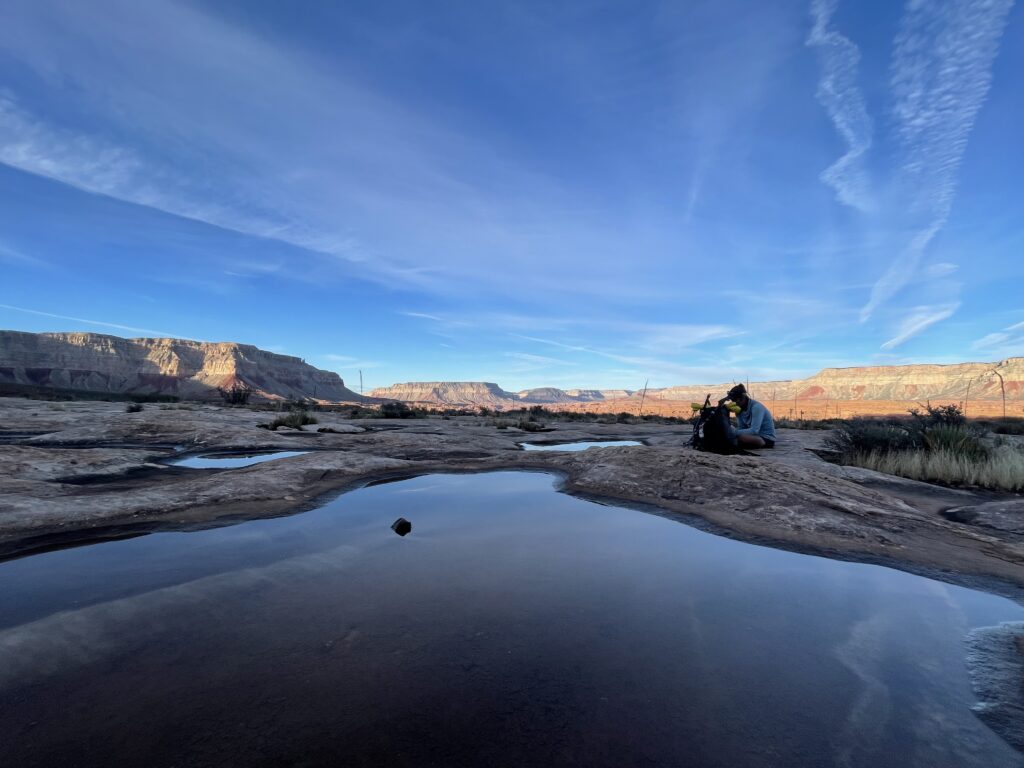
Spaciousness for my mind to wander and emotions to be processed. Even though this hike was full on both physically and mentally, it was nice, as it always is, to take a break from the firehose of information, emails, and tasks that fill my off-trail life. I had a lot that I needed to sit with, from my father’s death 18 months ago to the loss of my beloved feline companion of 17 years and the end of a 3-year romantic relationship this summer. I needed space to be and feel and grieve. And I got it.
Take-aways & Lessons
The following are lessons I took away from this experience and which I hope, in some way, will serve you as well. They range from the pragmatic to the abstract, some applicable only to Canyon travel while others apply well beyond the outdoors.
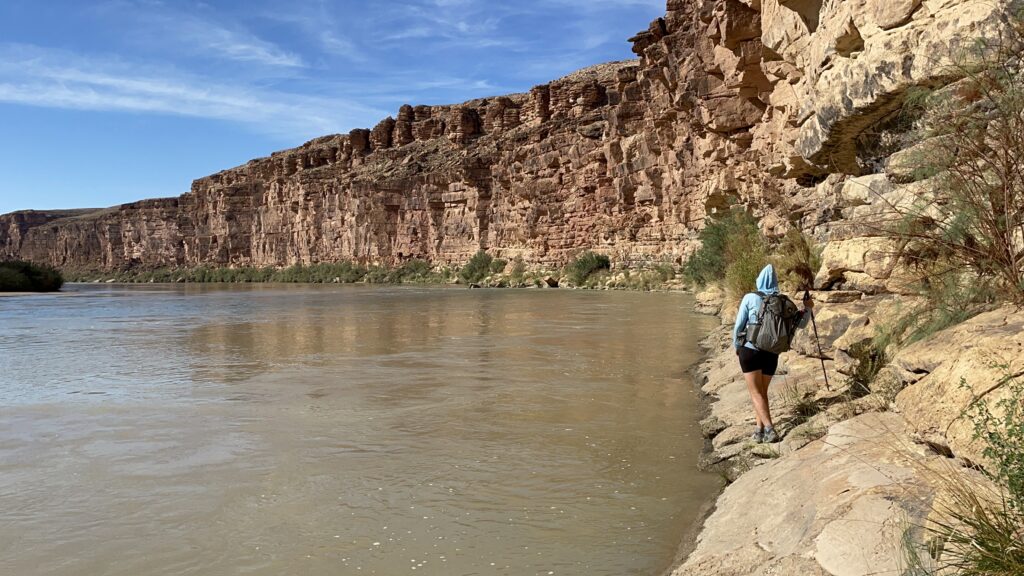
Hold expectations loosely. Early on in our hike, it became apparent to me that if I was going to enjoy the experience, I’d need to learn how to hold my goals for each day loosely. Travel was difficult and slow. For any sketched route mile on our GPS, we would need to add at least 20% for a realistic expectation of mileage required to cover that distance in the field, due to route-finding obstacles. With no trail, it’s rarely possible to travel in a straight line. Rather than our normal trail pace of 3+ mph, 1 mph became the standard. If we averaged 2 mph, we were really cruising.
Though we would study our maps, nothing could tell us the exact nature of the obstacles we’d encounter and how long it’d take us to problem solve our way through. I learned to hold expectations for the day loosely, not to get too far ahead of the present. It would only result in frustration and feeling deflated if we fell short of a goal, rather than staying present and feeling proud of what we did accomplish. Instead, I learned to keep a general idea of where I’m headed, and then take it step by step and hour by hour, leaving space in the day for adventure to unfold.
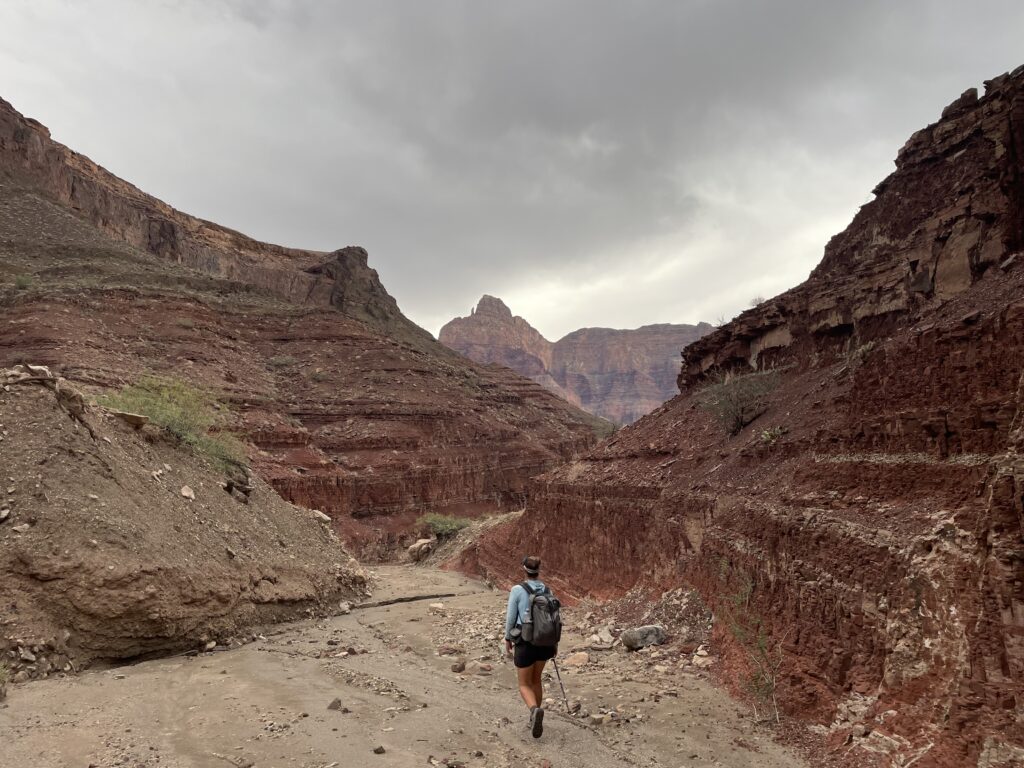
Most mistakes happen when I rush. From sliding down a loose ravine to brushing up against a cactus to fighting through mesquite when an easier way could be found above, many mishaps and minor injuries could be attributed to moving too fast and forcing a way through. I learned not to hurry. Walk with intention and slow down to find the best way through. And if it’s feeling too hard or dangerous, there’s probably a better way around. Go slow to go fast.
There’s no such thing as enough planning. We researched, planned, and prepared for this trip for months and it still wasn’t enough. Even though we’re seasoned backpackers, on this route, nothing can substitute for experience in the Grand Canyon. The more, the better to allow for learning different parts of the canyon and getting to know the area through various modalities (e.g. on foot and on raft). I have an incredible amount of respect for the folks who have spent a lifetime exploring and developing an intimate knowledge of the Canyon.
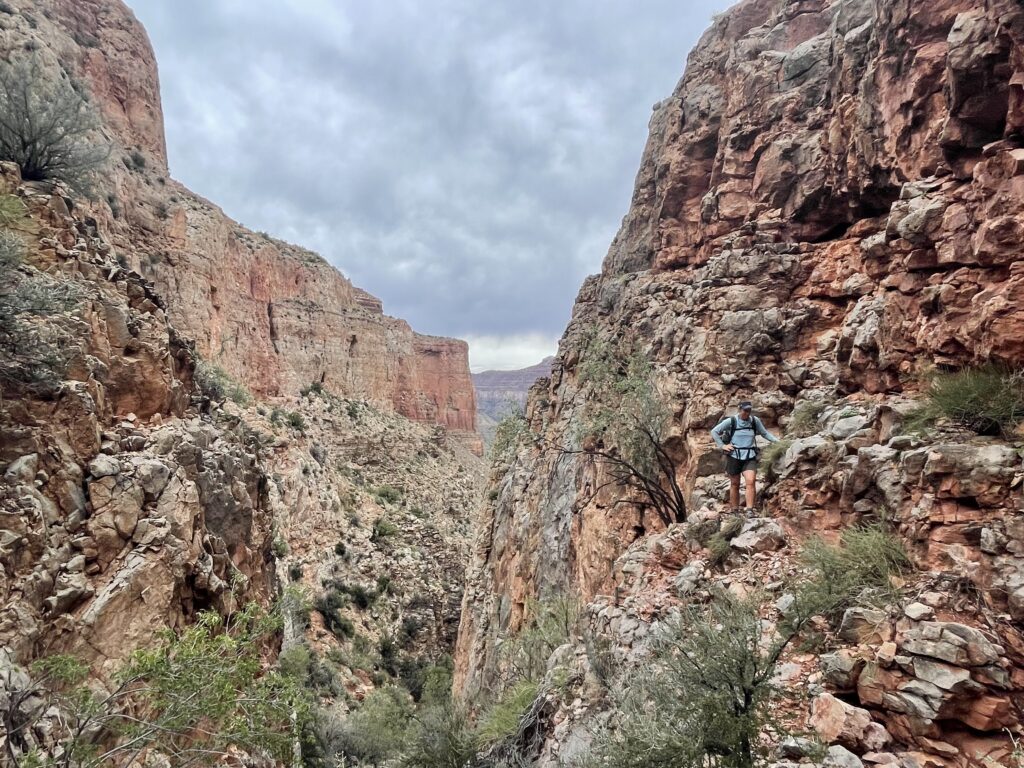
I am resilient. And, all that said, you can plan and prepare all you want –and you should– and still there will be things that catch you off guard, take you down, and humble you deeply. This was a tough route, so much so that I had days that I questioned what I was doing out there. It’s getting through those moments that remind me that I am capable and resilient. I can trust myself in the face of uncertainty, tolerate discomfort, and learn and grow from the experience.

Everything is only ever happening right here, right now. Being immersed in a society of busy-ness where our worth is linked to what we produce has conditioned my mind into unconsciously viewing things as a checklist. While I love to get stuff done, there’s a time and a place for that. That lens is beneficial for accomplishing goals, but it’s not conducive to staying present and soaking in the surroundings.
There were moments each day when I would become aware of the background instructions running in my mind: get through the ravine, around the side canyon, to the next water source, to camp, to the end. And then I’d arrive and realize I hadn’t truly taken in my surroundings along the way because my attention was focused on getting there rather than just being here.
As cliché as it is, it’s the journey, not the destination that’s the whole point. I can slip into this checklist mindset not just on trail, but in daily life as well. When I caught my thoughts wandering to the past or to the future, I’d remind myself “Here. Now. This is it.” It’s a gift and a privilege to be in this landscape and I can reciprocate that gift with my attention.
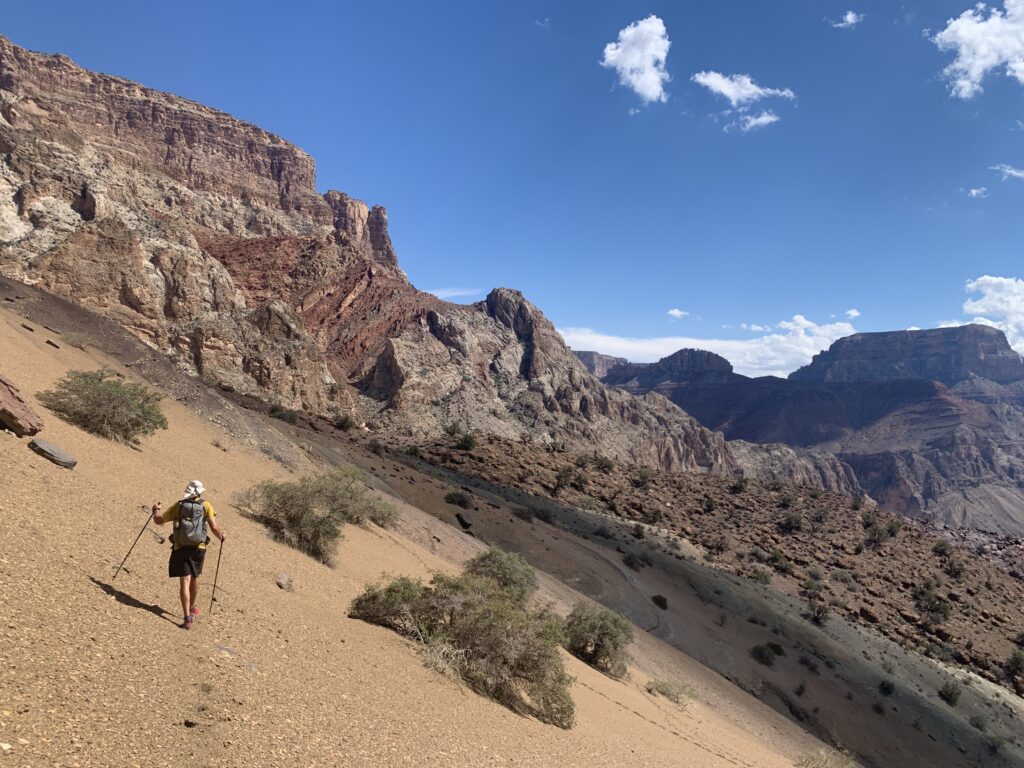
Final Thoughts
Finally, if you’ve read this far and you’re thinking about hiking this route, let me reiterate how challenging it is and how much preparation, research, and experience is necessary. Especially experience in the Grand Canyon. Ryan and I have a lot of off-trail backpacking experience and tens of thousands of miles on our feet, many of them in desert environments. We did months of planning, research, and preparation for this hike and still, we got walloped. Ryan’s words sum this up well:
“After hiking the route and getting to know the intricacies, I realized I didn’t know shit about the canyon no matter how much research I had done. I have so much respect and admiration for the folks who have spent a lifetime out there in the Grand Canyon. This route is simply not one to ‘plug and place.’ I will reiterate that the route is very, very dangerous. I will reiterate you will need to do more research for this than anything you have undertaken before. And, when you feel ready, you still need to do double the research.”
For step by step guidance on preparing for your next backcountry trip, our online courses are the best place to start:
- Adventure Ready Physical Preparation
- Performance Nutrition and Meal Planning for Backpackers
- Stay Safe in the Backcountry
- Become a Better Backcountry Navigator
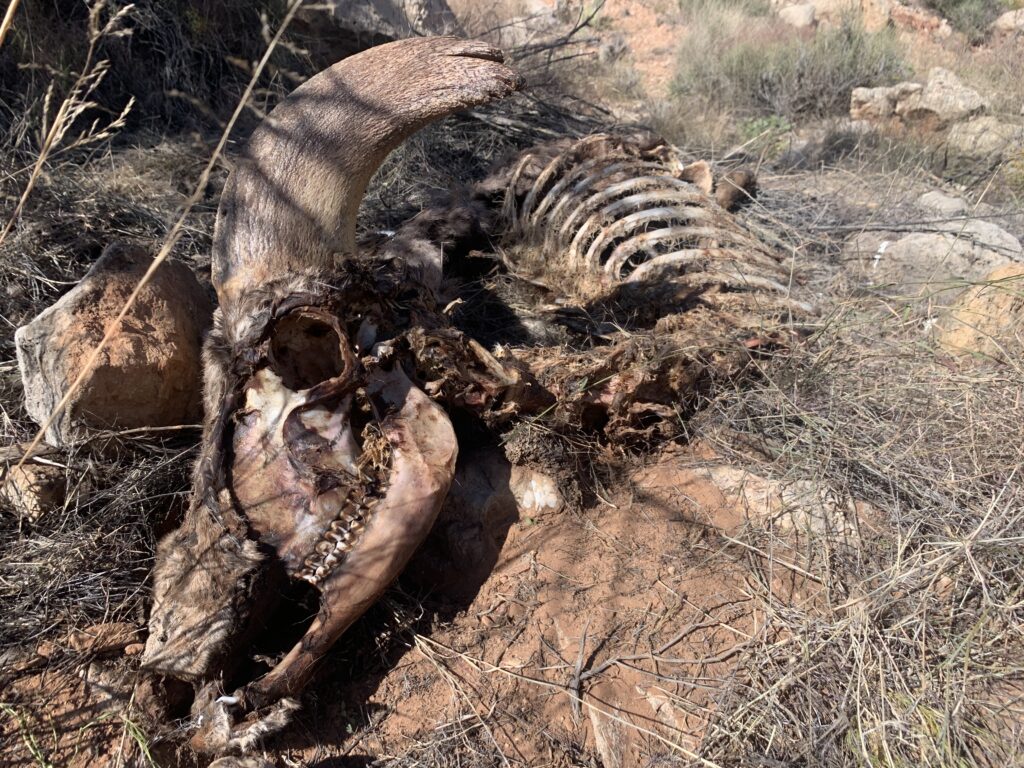

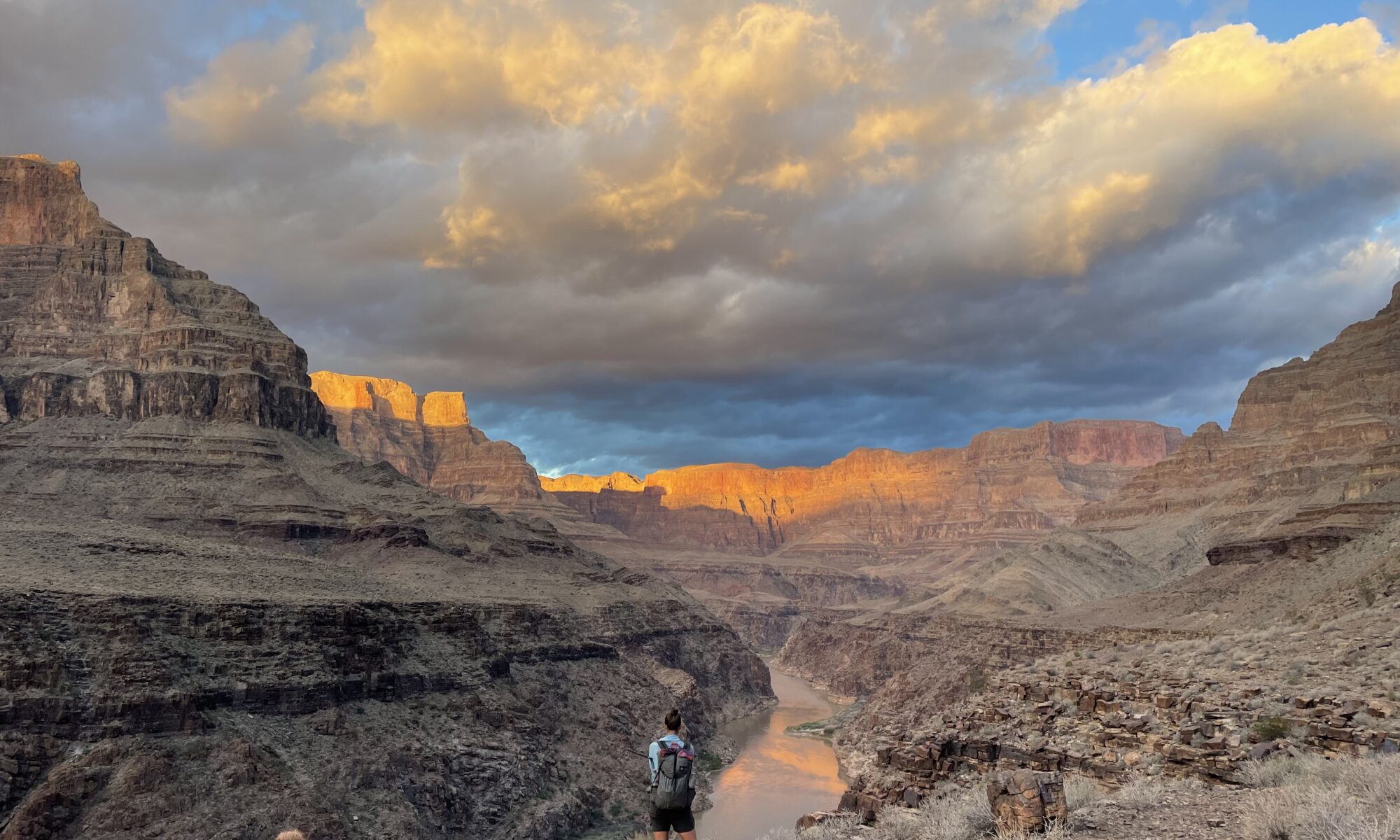
What an incredible adventure! A wonderful opportunity for growth and exploration. Thanks for sharing all the great information and insight.
Currently reading Zane Grey’s The Young Lion Hunter.
Googled “Grand Canyon mountain lions” and here I am… ✌